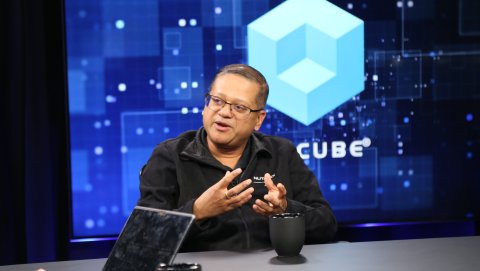Nutanix’s top executives share their views on the year’s biggest technology trends in this expert opinion piece.
Rajiv Ramaswami, President and CEO of Nutanix

- AI applications in the enterprise are going to become mainstream. Most companies at this point are in the early stages of adopting generative AI, and they’re starting to find some good business benefits.
- For example, internally at Nutanix we’re targeting a 25% improvement in our developer productivity by employing generative AI to do things like code generation for unit testing and a bunch of other functions. So these things are going to start becoming real across multiple facets in the enterprise, as these newer AI applications come to bear.
Tobi Knaup, GM Cloud Native at Nutanix

- IT leaders need to allocate significantly more budget to fund AI initiatives to remain competitive. AI is expensive, which will put pressure on the rest of IT to operate at maximum efficiency. AI can also be used as a tool to identify inefficiencies and automate labour-intensive processes, freeing up budget. IT leaders should adopt a “fund AI with AI” strategy and make plans to retire any product that doesn’t use AI.
- As more mission critical applications are moving to Kubernetes, organizations will move towards centrally managing Kubernetes, rather than allowing developers to manage their own, to increase security and lower costs.
Indu Keri, General Manager and Head of Engineering for Nutanix’s Hybrid Cloud

- The first software 2.0 applications will emerge. Software development and engineering is already being democratized with tools like Copilot. However, the transformation of enterprise software is just beginning. Today, software workflows are the same whether they are executed the first time or the millionth time. New software will start to emerge in 2025 that will learn from usage, and without active coding, will improve user experience and productivity, and this will be the beginning of a 20-year era of software transformation.
- Blockchain will return with a vengeance, as will crypto. The expectation that the new administration will be crypto-friendly has already sent Bitcoin price above $100,000. However, blockchain will make a comeback, based on regulatory fiat and the need to provide publicly-verifiable systems of record.
- Power consumption from inferencing at the edge will become an issue. The projected energy demand in the US is expected to double in the next 4 years, to roughly 880 TW. This is likely understating the growth if appropriate optimizations are not made to power usage and consumption. And contrary to popular perception, inferencing will be the true behemoth of power consumption, not just training.
Debo Dutta, VP of Engineering, AI, Nutanix

- We will get closer to AGI in 2025 via reasoning models like OpenAI o1 and its competition from Meta LLama and Alibaba. This will give AI models significantly more capabilities than today.
- GenAI leadership is open, small and global. We will see a lot of open permissible models that can do as well, if not better than closed models. We will also see open reasoning models too. In addition, models will also get compressed by learning from bigger/powerful models.
- Inference scaling or scaling computation during inference time will dramatically increase the cost of AI inference. Enterprises will need to revisit their infrastructure and power investments due to this new technology trend.
- Multi-agent AI or Systems of cooperating Agents will take centre stage. This will involve a collection of AI agents working cooperatively and will need new people, processes and technology to enable this in the enterprise. I also anticipate Agents will negotiate with other Agents.
- AI Inference will become even more important with the growth of reasoning models and agents.
- Cloud robotics will become a reality and enter the enterprise. This will lead to shared services and data infrastructure spending, especially in the Manufacturing sector. The same design pattern will also be true for managing software multi agents in the enterprise.
- New technology and architecture will emerge to fuel the next gen models and multi-agent systems.
- ARM will proliferate
- To overcome the memory wall, in-memory compute will get popular (similar to how Apple M4 style converged architectures with very high memory bandwidth).
- Smart NICs will run entire storage controllers
Image Credit: Nutanix





